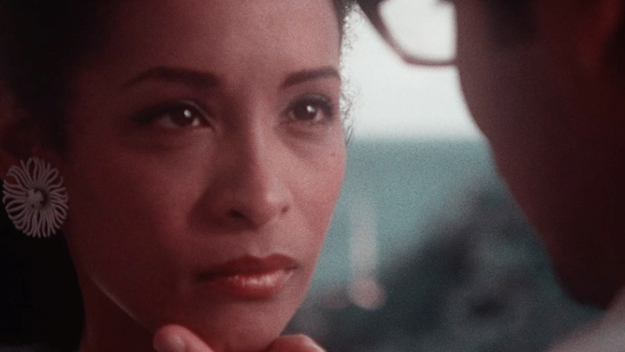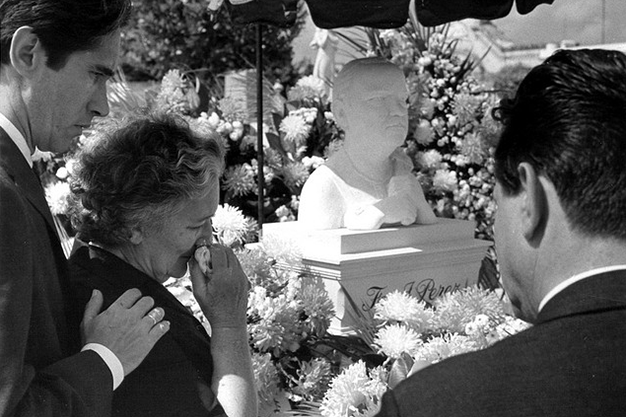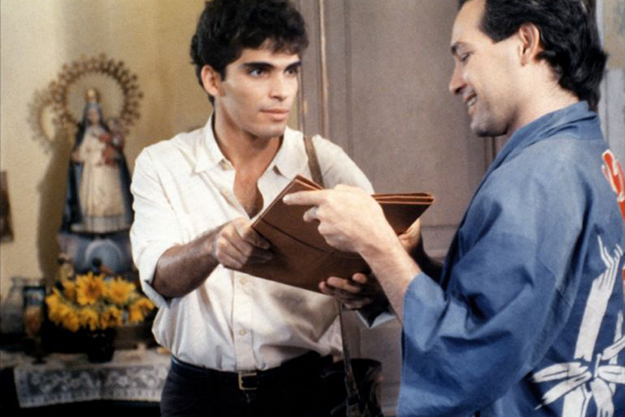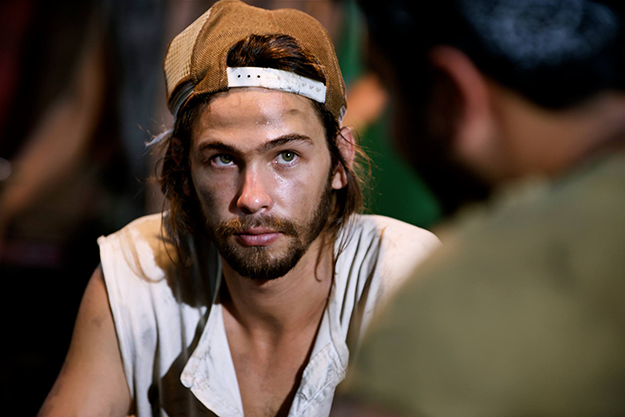Dissident Voices: Post-Revolutionary Cuban Cinema
Sin Alas
With his gorgeous second feature Sin Alas (Without Wings), Brooklyn-based filmmaker Ben Chace taps into Cuba’s long cinematic tradition of coping with memory and history. It might be an American production, but it’s the first movie filmed entirely in Cuba in more than half a century. Shot on nostalgic Super 16mm, Sin Alas is infused with close-ups and details that capture the old city of Havana, its faces and buildings inviting us to reminisce and yearn for a country, which is now on the verge of vigorous change. The release of Sin Alas, just a couple of weeks after New York’s annual Havana Film Festival, marks a good moment for a close look at Cuba’s turbulent love affair with the revolution as well as its homegrown film tradition.
The relationship between Cuba’s film industry and its Communist government has been a complicated, strenuous, yet mutually beneficial one for a little over 55 years. And even though the revolution owes so much of its long-lasting success to its cinema, post-revolutionary Cuban cinema has repeatedly been the subject of controversy. This age of Cuban cinema was born out of the revolution, co-evolving with its political aftermath. Their entanglement has made it impossible to discuss Cuban cinema without considering the country’s political context. Due to its subversive origins, post-revolutionary Cuban cinema is radical in nature. Throughout its history, it has at times been aesthetically bold, and others traditionally graceful. Periodically, Cuban directors fought for bigger-budget productions, while others highlighted the democratic and artistic significance of having what filmmaker Julio García Espinosa called “an imperfect cinema” in his controversial 1969 manifesto. They have also moved toward the avant-garde while maintaining a healthy balance with convention. Post-1960 Cuban cinema both rejected foreign influence and welcomed European and Soviet trends. Notwithstanding its contradictions, this new cinema has been consistently subversive, often blurring the lines between what it means to be revolutionary and what it means to be Cuban.
This captivating liaison began nearly three months after the Cuban Revolution triumphed on New Year’s Day in 1960. Cuba’s post-revolutionary film industry began on March 24 when the newly formed government established the Cuban Institute of Cinematographic Art and Industry (ICAIC), the first post-revolution cultural institution. Relying heavily on government funding, the ICAIC served as the government’s film production monopoly and as a national film fund. It was presided over by Fidel Castro’s university comrade, Alfredo Guevara, who led the ICAIC from its origins to the mid-’80s, turning the organization into one of the most significant cultural institutions in the country. Cuban revolutionaries like Guevara perfectly understood the importance of building a national film industry and its potential role within the Communist project. But for Cuba, film was not simply a mass medium of communication and education, it also served as a means to preserve a collective understanding of national consciousness, offering the Cuban people films that emphasized national identity.
Death of a Bureaucrat
Wasting no time, the ICAIC entered the ’60s with full force, establishing Cuban cinema as a consequential international presence. In July 1960, Cuban film giant Tomás Gutiérrez Alea’s 19-minute social documentary short Esta tierra nuestra (This Is Our Land) screened at the Berlin Film Festival. But it was his absurdist red-tape satire Death of a Bureaucrat that arguably became the first Cuban movie of international significance, winning the Special Jury Prize at the 1966 Karlovy Vary Film Festival. Even though Death of a Bureaucrat—a comedy highlighting the exhausting governmental bureaucracy in Cuba—poked fun at aspects of Communism, it showcased Alea’s creative sensibilities as a groundbreaking filmmaker, able to criticize aspects of his own government while staying loyal to the revolution.
Such a combination would eventually earn Alea significant backlash. A couple of years following his death in 1996, when he was already considered a godfather-type figure and a cinema legend, Fidel Castro made a surprising speech implicitly denouncing Alea’s final film, Guantanamera (95), co-directed with Juan Carlos Tabío, referring to it as “an unbalanced” movie making “morbid fun” of the revolution. Similar to Death of a Bureaucrat, Guantanamera tells the story of a woman from Guantanamo facing ridiculous bureaucracy as she tries to arrange a relative’s funeral. The film demonstrated how politically paradoxical Cuba’s most beloved cineaste was: his critiques were neither condemnations nor attacks but rather moral pokes at aspects of his government that he found troubling and worthy to laugh at (or laugh with).
Yet it’s really Alea’s Memories of Underdevelopment (68) that is widely considered to be Cuba’s most influential film. Set in 1961, when many Cubans exiled to Florida, Alea portrayed a sensitive moment in the country’s then-recent history, following Sergio (Sergio Corrieri), an ex-property owner left behind when his immediate family and friends flee to Miami after the revolution. The older, privileged Sergio becomes involved with a working-class aspiring actress whose religious family disapproves of the affair. Sergio is akin to 8 1/2’s Guido Anselmi, but instead of being afflicted by Roman Catholic guilt, he carries Cuba’s equivalent burden: the weight of the former bourgeoisie. The film plays like a memory—often gliding between past and present, purposely distorting the audience’s temporal perception. Like Alain Resnais did with Hiroshima Mon Amour, Alea ingrains an impactful moment of a country’s recent history into a poetic retelling, underlining cinema’s function as a collective consciousness and a mechanism to preserve national memory. Memories of Underdevelopment didn’t just reflect the soul-tearing predicament of Cuba’s bourgeoisie but served as a recording of history necessary to deal with the trauma of separation so that the country could move forward.
Strawberry and Chocolate
In contrast to Cuban cinema’s “golden age,” the 1970s and ’80s arrived with less force as the ICAIC struggled to maintain production. With efforts like the establishment of the Havana Film Festival (Festival de Nuevo Cine Latinoamericano) in 1979, Cuba fought to compete in the expanding Latin American film scene. Upon the collapse of the Soviet Union in 1991, Cuba nearly went bankrupt, putting the country in a devastating economic recession, known as the “Periodo Especial” (Special Period) from which it never fully recovered. This was an especially difficult time for the ICAIC, which was still reeling from the unstable 1980s, marked by Humberto Solas’s 1982 financially ruinous Cecilia, remembered as one of the ICAIC’s most costly ventures. During the 1990s, the ICAIC produced a significant number of controversial films, testing the government’s patience but eventually triumphing over its censors. In 1991, the ICAIC funded Daniel Díaz Torres’s bizarre Alicia en el Pueblo de Maravillas (Alice in Wondertown), a satire of Cuban society. Borrowing loosely from Lewis Carroll’s story and heavily employing allegory, Torres paints a grotesque portrait of the fictional Cuban town of Maravillas (Wonders) and its eccentric inhabitants through the eyes a naïve acting teacher. The film was accused of being counter-revolutionary and offensive Tabío and Alea’s co-directing efforts Strawberry & Chocolate and Guantanamera followed Alicia en el Pueblo de Maravillas down the rabbit hole of one of the most difficult decades in post-revolutionary Cuba.
The troubled 1990s set the stage for the next generation of Cuban filmmakers, including the likes of Carlos Quintela Machado, Claudia Calviño, Carlos Lechuga, and Alejandro Brugués, whose 2011 satirical horror flick Juan of the Dead chronicles a group of young Cubans facing a zombie attack while the media call the undead “dissidents,” who are trying to take over the Cuban government. This generation, raised in the financially unstable ’90s, emerged at the turn of the century, producing films that worried less about censorship and focused more on telling stories that weren’t typically depicted by the ICAIC. Boosted by the so-called digital revolution, independent cinema, which was uncommon at the time, progressively established itself as an alternative to the long-standing ICAIC. To Cuban independents like Carlos Lechuga, who studied screenwriting at the renowned International School of Film and Television (EICTV) in San Antonio de los Baños, making films outside the government-funded system is both immensely challenging and artistically rewarding. “It is an advantage because we independent filmmakers can pick stories and topics that they [the ICAIC] are not interested in telling,” Lechuga said in an e-mail conversation. His feature debut, Melaza (12), about a couple struggling to pay a government fine placed on a local sugar mill, was produced entirely without the ICAIC’s involvement. Needless to say, the film was harshly criticized by the organization and its former director Omar Gonzalez, who went so far as to refuse to watch it. Lechuga recalls: “Without having even seen it, not only did he decide to censor it, he also tried to make the film go unnoticed at the Havana Film Festival.”
But not all of the ICAIC object to independent filmmaking. Gerardo Chijona, an ICAIC member since 1974, and one of the founding teachers of the EICTV had his fair share of quarrels with the Cuban establishment back in 1992 when his narrative debut, Adorables Mentiras (Adorable Lies), stirred a bit of controversy and its premiere was delayed three years. Chijano claims to have the “best opinion on the emerging generation,” and says that a new government initiative that would be more sympathetic toward independent cinema in Cuba is feasible. “We are debating with the authorities at this moment about the possibility of a fund to promote national production in which the ICAIC will act as an institution and not as a production company.” Chijona, whose latest film, La Cosa Humana (The Human Thing), premiered at this year’s Tribeca Film Festival, said: “One thing that comforts me and fills me with pride is when I see some of my students in festivals with their film in the lineup with mine,” and admits that it’s not necessary to go through the ICAIC anymore. “Many young people begin independently filming their projects with a lot of patience and sacrifice and pull through. For example, in last year’s Havana Film Festival there were six Cuban premieres: three made through the ICAIC and three independent productions.”
La Cosa Humana
With President Obama restoring diplomatic relations with Cuba and the recent U.S. Department of the Treasury’s authorization for American productions to shoot on the island for the first time in nearly half a century, it’s hard to predict what comes next. For many Cuban filmmakers, the future of their country’s cinema is uncertain. “Things can change in just a matter of hours. Cuban technicians will benefit a lot from this…However, I’m not sure if it will be easier or harder for young directors, screenwriters, and independent filmmakers who want to make their first films,” Lechuga explains. “But the most important thing is that the Cuban people can continue to tell their own stories.” On the other hand, Chijona hopes the new relationships will lead to American-financed Cuban films: “I think there’s a small chance they’ll help finance Cuban-based productions in Spanish, [but] Cuban filmmakers are ready to establish any type of collaboration between these two countries and there’s many scripts that I hope can become films with American funding.”
But the U.S.-Cuba reconnection isn’t just affecting Cuban production. In February 2015, it was announced that the UCLA Film & Television Archive would work with the Cinemateca de Cuba (the national Cuban film archive) to study, preserve, and showcase the country’s much-forgotten pre-revolutionary cinema. “I must insist,” warned Luciano Castillo, a well-respected Cuban critic and programmer, “our cinema has existed since 1898 when a Cuban stood behind the camera to shoot El Brujo Desaparecido [a short ad] for a brewery. Even if it never became an industry, never recouped at the national box office, or had any international presence, we can’t pretend to start from scratch like the ICAIC attempted to do in its origins.” According to Castillo, who is also the director of the Cinemateca, this partnership is unprecedented. This preceded BAMcinématek’s series last year on Cuban film, Cuba: Golden 60s, which focused on Cuba’s prolific first decade of post-revolutionary cinema. “I believe that it is projects like these that tighten relationships with our country for our impact in the preservation of the island’s cultural film heritage.”
This will most likely be the first of many exchanges between these two estranged countries. And hopefully this new cultural bridge will lead to a wider appreciation of the undervalued audacity of Cuban cinema in all its shapes and expressions.











